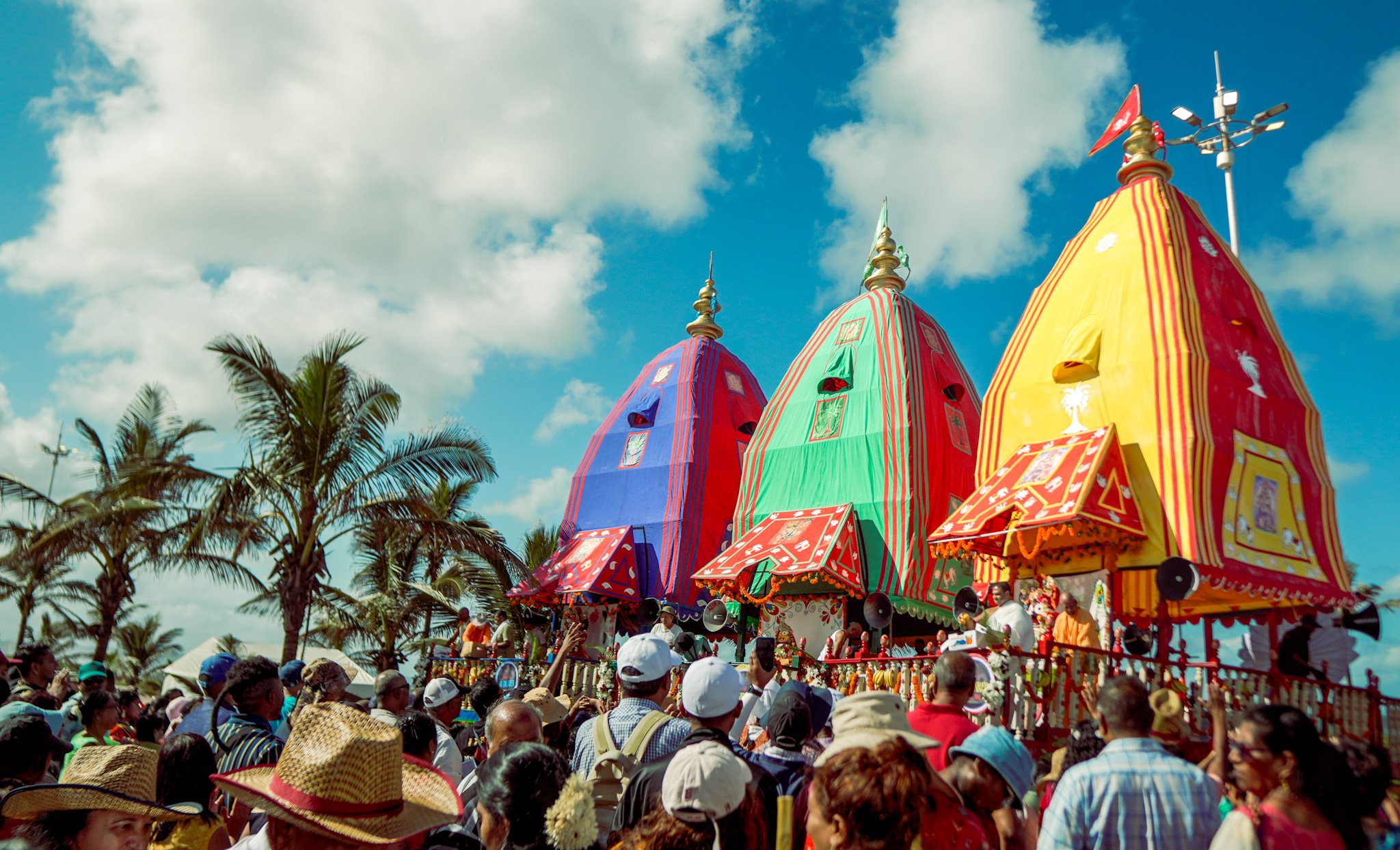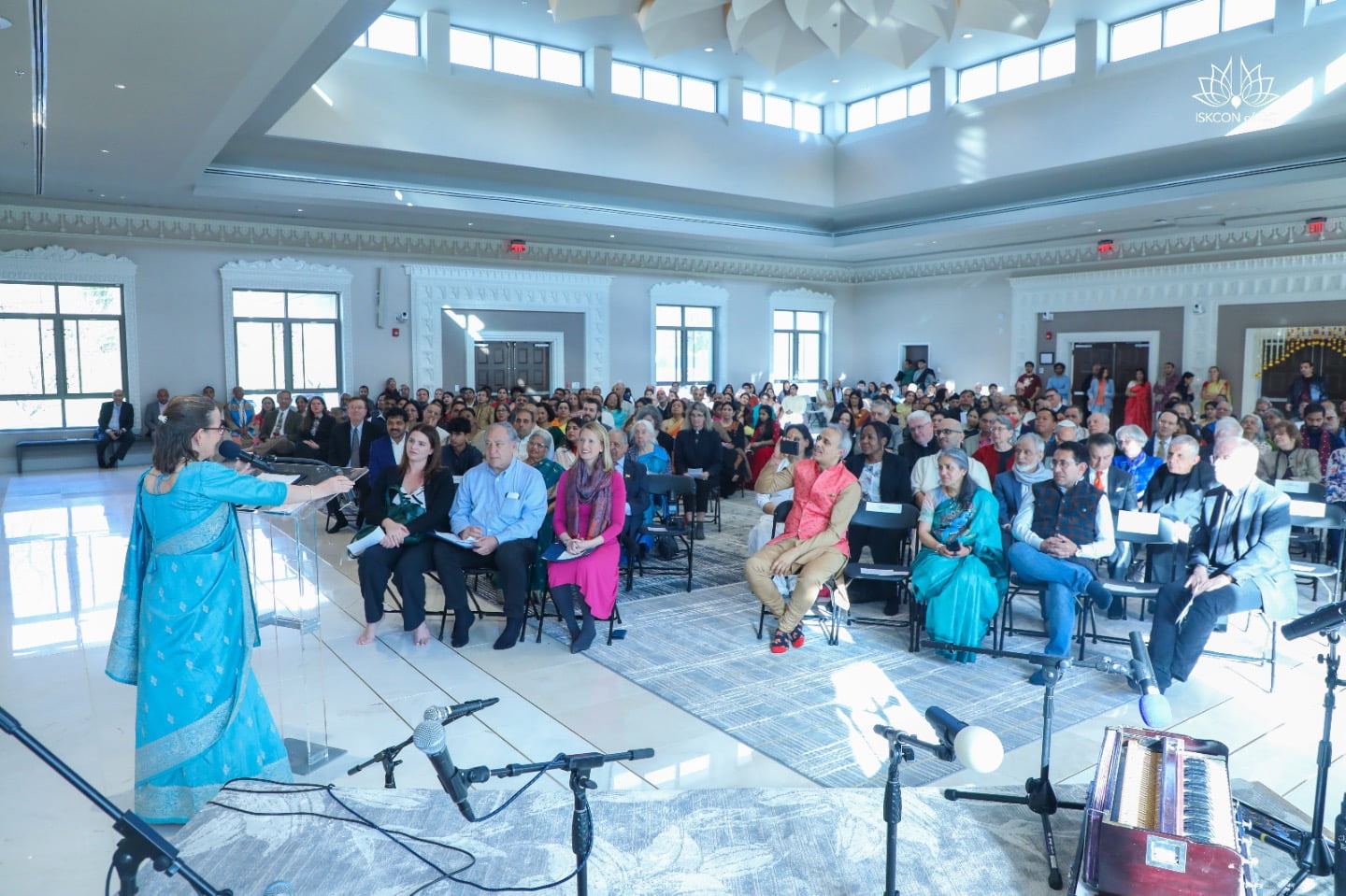Elementary Students Produce Inspirational ISKCON 50 Puppet Show
By Madhava Smullen | Dec 29, 2016
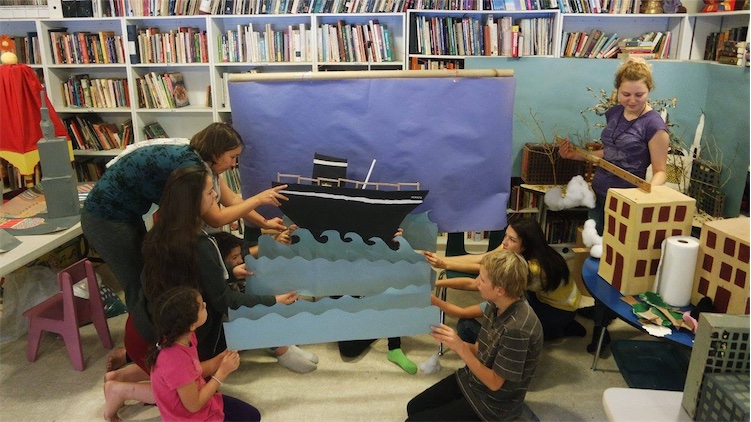
Elementary and some secondary school students at the Govardhan Academy in Saranagati, B.C., Canada have produced an inspirational and heartfelt puppet show film of how Srila Prabhupada founded ISKCON for ISKCON’s 50th anniversary.
The forty-minute film, “Mission of Mercy,” premiered at Srila Bhaktisiddhanta Sarasvati’s disappearance day at the Saranagati temple on December 17th, and was very well received. It is now available to view for free on Youtube, and the children’s stunning dedication, hard work and love for Prabhupada is evident in every frame: https://www.youtube.com/watch?v=y73WYlpisEw
The elementary school children, aged six to twelve, began by watching Yadubara Dasa’s DVD series “Following Srila Prabhupada” for the month before Kartik.
Then, starting on October 15th, the first day of Kartik, they threw themselves into creating and filming the puppets and sets for the next two months.
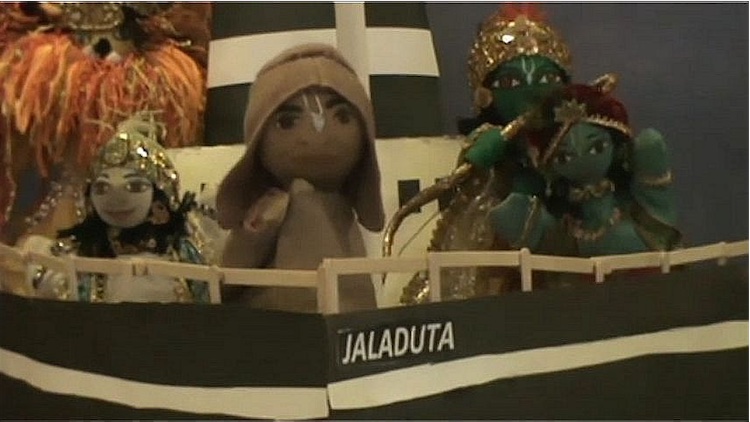
Srila Prabhupada’s dream in which Lord Krishna and his avatars guide the ship
“It was actually a multi-generational effort,” says Kartamasa Delaney, a second-generation devotee who runs the Govardhan Academy with his wife Radha Kunda.
“The script is derived from the play scripts my dad Radha-Damodara Das wrote years ago. The puppets are made by Jagatarini Dasi, who produced the ITV puppet show videos many of us grew up with. Eight to ten new puppets were created specially for our production by second-generation parents like Devahuti, Manu and Satarupa. And the elementary kids creating the sets, doing the voices and moving the puppets were their children.”
Since it premiered on Srila Bhaktisiddhanta Sarasvati’s disappearance day, the ambitious puppet show begins with Srila Prabhupada meeting his guru and receiving his instruction to preach in the West. Lines are lifted directly from a class Prabhupada gave on his guru’s disappearance day in 1973, when he recalled the meeting. And the theme of Prabhupada fulfilling the order of his spiritual master continues throughout the puppet show.
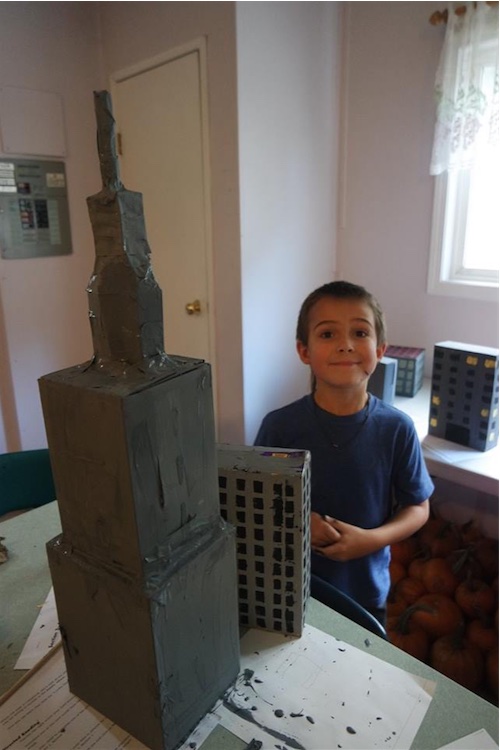
A student happily working on the New York Skyline
The film also covers Prabhupada’s early struggles in India, his life-threatening voyage aboard the Jaladuta, his starting ISKCON in New York, and how ISKCON spread from there to San Francisco, London, India and Russia.
The many different puppet characters in the film include Srila Prabhupada’s wife Radharani; Sumati Morarji of the Scindia Steamship Company; Shyamasundara, Yamuna and Malati, some of the first devotees who brought Krishna consciousness to the UK; Anatoli, the first Russian devotee; and Alan Ginsberg, John Lennon, and George Harrison.
The children worked incredibly hard to build twenty unique sets for the puppet show, each of which took days. These included many interiors such as Prabhupada’s home in India, his rooms in various countries, the airports where he spoke to reporters, and Sumati Morarji’s office where he booked his trip to America.
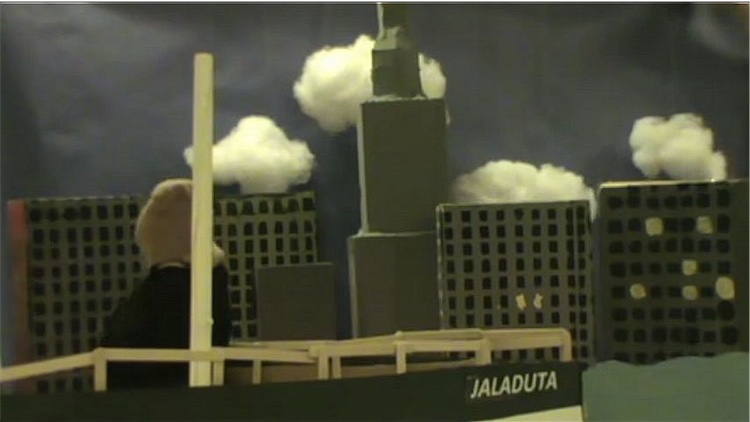
The completed New York skyline in the production, as Prabhupada arrives on the Jaladuta
The exteriors, meanwhile, took a lot of creativity. “For the scene in Tompkins Square Park, where the first public Harinama Sankirtan took place, we had the famous tree, the buildings in the background, and we used real snow, all for two or three seconds of footage,” says Kartamasa.
In Russia, the children built the Kremlin so that it would be visible through Prabhupada’s hotel room window. When Prabhupada arrives on the Jaladuta, the New York skyline, including key buildings like the Empire State Building, is very effectively created using cereal boxes. And in a deeply inspirational scene of San Francisco Rathayatra, there’s a full Rathayatra cart and dancing devotees with flags and instruments.
Perhaps most impressive, however, is the Jaladuta journey itself. “We stuck the waves and the boat itself onto popsticle sticks so that we could move them, and made the cotton clouds glide across the sky with invisible threads,” says Kartamasa. “Just the ten or fifteen seconds of working footage took half an hour to film because the small children’s arms would get tired, and they had to keep switching.”

Hard at work building a whole Rathayatra cart for the production
In one moving scene, dim atmospheric lighting shifts as Prabhupada suffers heart-attacks aboard the Jaladuta while it pitches in the ocean. “Because our school has all natural lighting, we had to film in the bathroom, the only place that doesn’t have a window and could be dark,” Kartamasa says. “And we used someone’s cell phone to create that dim, moving light.”
Puppeting was also a challenge. Simply holding their arms up in the air for long periods of time was very tiring for the children, and they had to constantly take turns. They also recorded all the dialogue for the various characters, which they had to memorize so that it sounded natural and not like they were reading it off the page.
“People think movie-making is so glamorous,” Kartamasa says. “But it’s just a ton of work! We had to learn a lot of things that are normally done by professionals.”
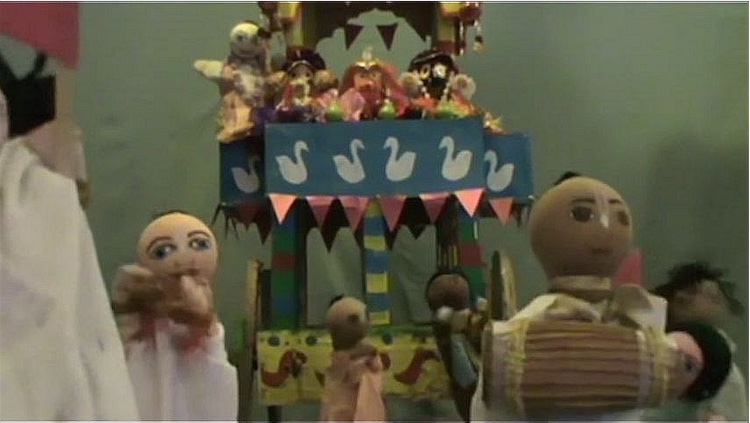
Devotees chanting at San Francisco Rathayatra in the finished production
The secondary school students shot and edited the film with three different cameras: one taking a broad shot, and two taking close-ups to mix and match in the editing process. They also did the sound effects and soundtrack which uses Srila Prabhupada’s own bhajans throughout.
“That’s one of my favorite elements,” says Kartamasa. “If I watched the film without any of the dialogue I’d still get the whole story, because Prabhupada’s feeling and moods are so prominent in his bhajans.”
Kartamasa’s main goal in making the puppet show was for students to learn about, understand and feel connected to Srila Prabhupada – a growing concern in ISKCON for newer generations of devotees.
It worked. Just halfway through the two-month project, while observing Prabhupada’s disappearance day at the temple in Saranagati, students stood up and appreciated his love for his devotees, his courage, his determination and his patience with heartfelt words and tears in their eyes.
The film “Mission of Mercy”
“I felt it was so important for them to have a personal relationship with Srila Prabhupada,” Kartamasa says. “These kids grew up hearing about Prabhupada as a sort of mythical figure that’s becoming more and more distant. But not anymore. By doing this I feel they really got a connection with him, almost to the point of a close friend or family member. By saying those lines that he said, and the prayers he composed, and acting it out through the puppet, they got to know him well, to feel him.”
Kartamasa adds: “I figured if they understand just a little bit of Prabhupada’s sacrifices, and determination, then they would have enough gratitude to do some service for him in their lifetime. And that’s really all we ever want to see – that we continue to have young devotees eager to serve Prabhupada.”
“If any one of them feels indebted to Prabhupada and wants to give part of their life to Prabhupada’s mission, then this whole effort is a huge success,” he concludes.
* * *
Watch the full “Mission of Mercy” film here: https://www.youtube.com/watch?v=y73WYlpisEw
Watch Govardhana Academy’s 2012 puppet show “Dacoits of Nitai” here: https://www.youtube.com/watch?v=tMHZveivQn8
Watch the “Dacoits of Nitai” behind-the-scenes video here: https://youtu.be/-OCXfllCe0k









